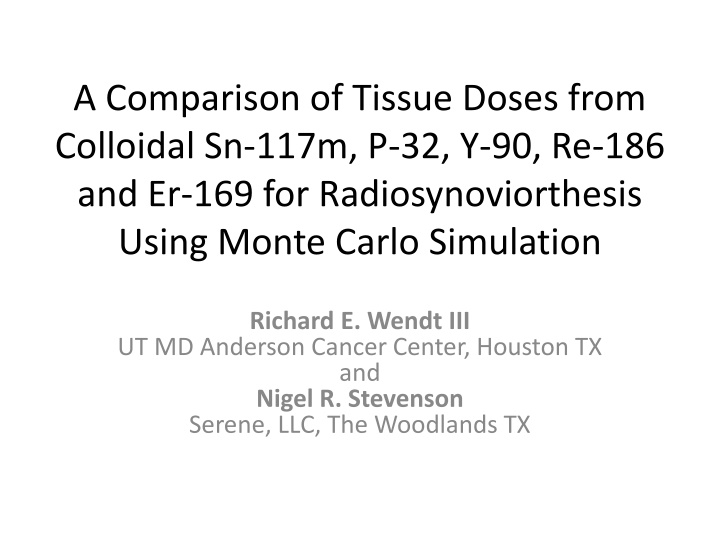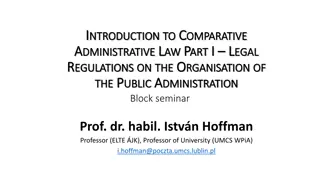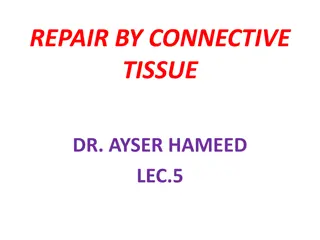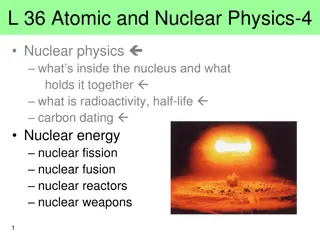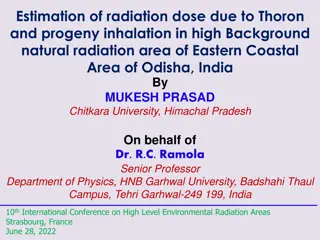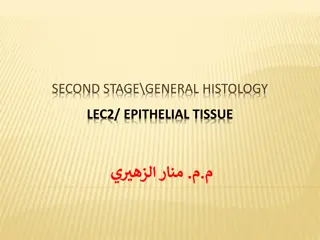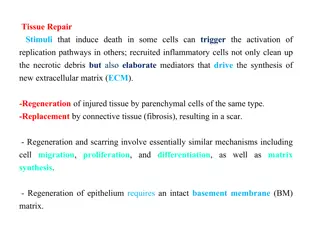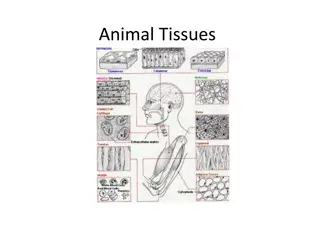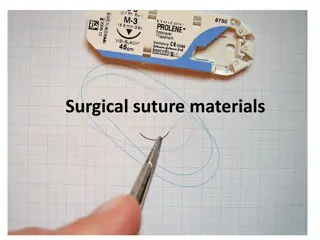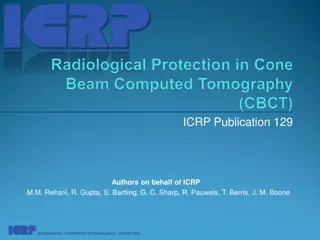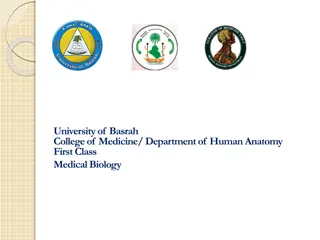Comparison of Tissue Doses from Various Radionuclides for Radiosynoviorthesis
This study compares tissue doses from different radionuclides - Sn-117m, P-32, Y-90, Re-186, and Er-169 - for radiosynoviorthesis using Monte Carlo simulation. It explores electron range, half-life, and therapeutic absorbed doses to synovial tissues, presenting a hypothesis on the selection of radionuclides based on electron range and migration by macrophages. The model of the synovial joint and Monte Carlo simulations contribute to understanding the implications for treatment. Acknowledgments and disclosures related to funding and ownership are also disclosed.
Download Presentation

Please find below an Image/Link to download the presentation.
The content on the website is provided AS IS for your information and personal use only. It may not be sold, licensed, or shared on other websites without obtaining consent from the author.If you encounter any issues during the download, it is possible that the publisher has removed the file from their server.
You are allowed to download the files provided on this website for personal or commercial use, subject to the condition that they are used lawfully. All files are the property of their respective owners.
The content on the website is provided AS IS for your information and personal use only. It may not be sold, licensed, or shared on other websites without obtaining consent from the author.
E N D
Presentation Transcript
A Comparison of Tissue Doses from Colloidal Sn-117m, P-32, Y-90, Re-186 and Er-169 for Radiosynoviorthesis Using Monte Carlo Simulation Richard E. Wendt III UT MD Anderson Cancer Center, Houston TX and Nigel R. Stevenson Serene, LLC, The Woodlands TX
Acknowledgment and Disclosure The work of REW was supported by an unrestricted grant from Serene, LLC. NRS is an officer and owner in Serene, LLC. 2
Radiosynoviorthesis Radionuclides e- Radionuclide Application Electron Range in ICRU 4-Component Tissue* (avg.; max. mm) Half-life (days) Y-90 (citrate) Large (knee) (4.05; 11.4) 2.67 P-32 (Cr04P) Re-186 (sulfide) Large (knee) (2.78; 8.3) 14.3 Medium (elbow) (1.06; 4.79) 3.72 Er-169 (citrate) Small (fingers and toes) (0.14 [0.3 ]; 1.07) 9.40 Sn-117m (6 m colloid) Canine elbow (investigational) CE (0.241; 0.290 ) 14.0 *NIST ESTAR database for electron CSDA ranges: http://physics.nist.gov/PhysRefData/Star/Text/ESTAR.html Numerous sources state that the average range of Er-169 in tissue is 0.3 mm 3
Premise and Hypothesis Conventional Premise: One should choose a radionuclide that has an electron range in tissue that is commensurate with the size of the joint synovium. Hypothesis: Migration by macrophages containing longer-lived, short-range radioactive particles into all of the layers of the synovial tissues delivers therapeutic absorbed doses throughout the synovium. 4
Model of the Synovial Joint LS Johnson, Beta-Particle Dosimetry in Radiation Synovectomy and Use of the 10B(n, ) Nuclear Reaction to Examine the Pathology of Rheumatoid Arthritis, PhD, Massachusetts Institute of Technology, 1994, p. 65. Figure used with the permission of Dr. Johnson. 5
Monte Carlo Simulation GATE 8.0 Monte Carlo simulations The source definitions were built using the complete radionuclide emissions data from ICRP 107. Johnson s model was built as a stack of 4 cm-diameter disks of the specified thicknesses for each layer. The spatial resolution perpendicular to the synovial tissue was 0.1 mm. The GATE materials were Rib Bone for the bone, Cartilage for the cartilage, Water for the capsule and Muscle for the synovium. The QBBC_EMY physics list was used. Two million events were simulated for each scenario. 6
Stationary Activity on the Surface of the Synovial Lining 7
Macrophage Action Radioactive colloidal particles are collected on the synovial lining and then transported deeper into the synovial tissue. 100 400 The arrow ( ) indicates an area of inflammation in the autoradiographs. 9
Moving Source Dose Distributions Nuclide Rel. Act. Nuclide Rel. Act. Sn-117m 1.00 Sn-117m 1.00 Er-169 2.20 Er-169 2.41 Y-90 2.65 Y-90 4.10 Re-186 2.47 Re-186 3.50 P-32 0.463 P-32 0.615 11
Discussion and Conclusion The relatively long half-lives of P-32, Er-169 and Sn-117m potentially allow them to be carried well into the synovial tissue before depositing all of their energy, assuming a suitable particle size. With the movement model in this study, the dose distributions of Er-169, Re-186 and Sn-117m are very similar. The further investigation of Sn-117m for the radiosynoviorthesis of medium-sized as well as smaller-sized joints is warranted. 12
